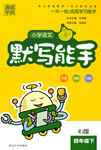题目内容
________ for several weeks, the city needed food.
- A.As having flooded
- B.being flooded
- C.Having been flooded
- D.To flood
“被水淹了几个星期,这个城市需要食物。”根据句意应用被动语态,“水淹”发生在“需要食物”之前,所以用having done。

 通城学典默写能手系列答案
通城学典默写能手系列答案Disposing(处理)of waste has been a problem since humans started producing it.As more and more people choose to live close together in cities,the waste-disposal problem becomes increasingly difficult.
During the eighteenth century,it was usual for several neighboring towns to get together to select a faraway spot as a dump site.Residents or trash haulers(垃圾拖运者)would transport household rubbish,rotted wood,and old possessions to the site.Periodically some of the trash was burned and the rest was buried.The unpleasant sights and smells caused no problem because nobody lived close by.
Factories,mills,and other industrial sites also had waste to be disposed of.Those located on rivers often just dumped the unwanted remains into the water.Others built huge burners with chimneys to deal with the problem.
Several facts make these choices unacceptable to modern society.The first problem is space Dumps,which are now called landfills,are most needed in heavily populated areas.Such areas rarely have empty land suitable for this purpose.Property is either too expensive or too close to residential neighborhoods.Long-distance trash hauling has been a common practice but once farm areas are refusing to accept rubbish from elsewhere,cheap land within trucking distance of major city areas is almost nonexistent.
Awareness of pollution dangers has resulted in more strict rules of waste disposal.Pollution of rivers,ground water,land and air is a price people can no longer pay to get rid of waste.The amount of waste,however,continues to grow.
Recycling efforts have become commonplace,and many towns require their people to take part.Even the most efficient recycling programs,however,can hope to deal with only about 50 percent of a city’s reusable waste.
【小题1】The most suitable title for this passage would be ______.
| A.Places for Disposing Waste | B.Waste Pollution Dangers |
| C.Ways of Getting Rid of Waste | D.Waste Disposal Problem |
| A.burying it | B.recycling it |
| C.burning it | D.throwing it into rivers |
| A.Farm areas accept waste from the city in modern society. |
| B.There is cheap land to bury waste in modern society. |
| C.It is difficult to find space to bury waste in modern society. |
| D.Ways to deal with waste in modern society stay the same. |
| A.draw people’s attention to waste management |
| B.warn people of the pollution dangers we are facing |
| C.call on people to take part in recycling programs |
| D.tell people a better way to get rid of the waste |